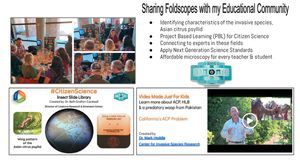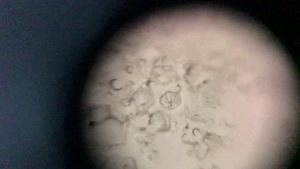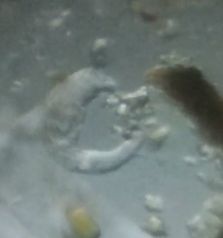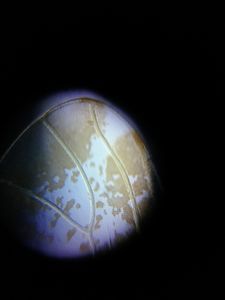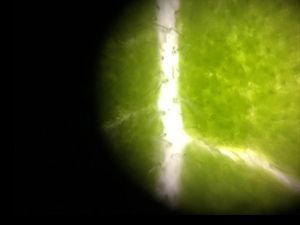How can an insect the size of a grain of rice kill a citrus tree?
 Sep 26, 2021 • 12:11 AM UTC
Sep 26, 2021 • 12:11 AM UTC United States
United States 140x Magnification
140x Magnification Fungi
FungiAmy Downs
5th & 6th-grade teacher in Visalia, California
13posts
1comments
5locations
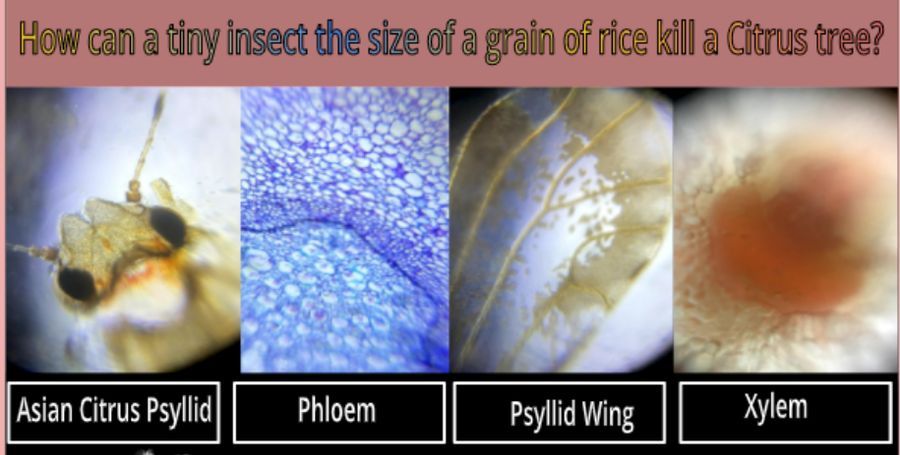
“I know what you’re thinking, WHAT IN THE WORLD?!?! The insect is called the Asian Citrus Psyllid, and yes it CAN kill a tree.”
photo collage by Valentina, 8th grade
quote by Yolada, 7th grade
photo collage by Valentina, 8th grade
quote by Yolada, 7th grade
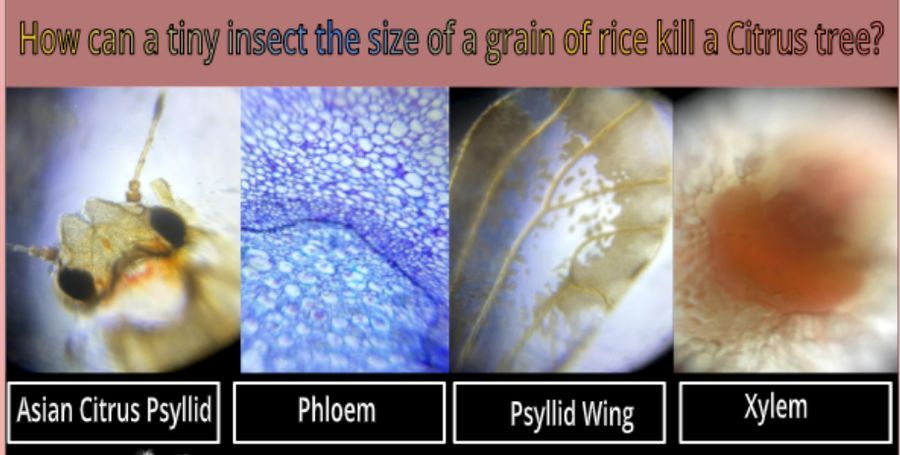
PROJECT STORY MAP: Save Our Citrus
https://bit.ly/SaveOurCitrus2021
Culiminating project includes student work & videos.
In the summer of 2020, I was selected as the Citizen Scientist Fellow through the California State University Bakersfield Citizen Scientist Project. The main goal of this project was to identify and address issues of community concern in collaboration with scientists and community agencies.
By using Foldscopes, my students studied the vascular system of plants. These lessons helped them to understand how Huanglongbing disease kills citrus trees with a bacterium ( Candidatus Liberibacter asiaticus) that blocks nutrients from being transported through the tree. It is a vector of the Asian citrus psyllid.
Foldscope Lessons & Investigations
ROOT HAIRS: We germinated mustard seeds to study the function of root hairs and water enters plants through root hairs by osmosis CELERY: We soaked celery in red food coloring was used to see the xylem and learn about the transpiration pull STOMATA: By painting clear nail polish on leaves and peeling it off with clear tape we were able to see stomata and guard cells and learn how and why the open and close ONION: In order to model osmosis we used distilled water and salt water to help us learn about semipermeable membranes and diffusion. PHLOEM: We used the prepared slide that came with our Foldscopes to investigate the vascular bundles and phloem. ASIAN CITRUS PSYLLID: Prepared slides were made of the Asian citrus psyllid for my students by a group of citrus scientists who helped to mentor me throughout this project. This allowed the students to better understand how vector diseases are transmitted.
https://bit.ly/SaveOurCitrus2021
Culiminating project includes student work & videos.
In the summer of 2020, I was selected as the Citizen Scientist Fellow through the California State University Bakersfield Citizen Scientist Project. The main goal of this project was to identify and address issues of community concern in collaboration with scientists and community agencies.
By using Foldscopes, my students studied the vascular system of plants. These lessons helped them to understand how Huanglongbing disease kills citrus trees with a bacterium ( Candidatus Liberibacter asiaticus) that blocks nutrients from being transported through the tree. It is a vector of the Asian citrus psyllid.
Foldscope Lessons & Investigations
ROOT HAIRS: We germinated mustard seeds to study the function of root hairs and water enters plants through root hairs by osmosis CELERY: We soaked celery in red food coloring was used to see the xylem and learn about the transpiration pull STOMATA: By painting clear nail polish on leaves and peeling it off with clear tape we were able to see stomata and guard cells and learn how and why the open and close ONION: In order to model osmosis we used distilled water and salt water to help us learn about semipermeable membranes and diffusion. PHLOEM: We used the prepared slide that came with our Foldscopes to investigate the vascular bundles and phloem. ASIAN CITRUS PSYLLID: Prepared slides were made of the Asian citrus psyllid for my students by a group of citrus scientists who helped to mentor me throughout this project. This allowed the students to better understand how vector diseases are transmitted.

ROOT HAIRS: Germinated mustard seed
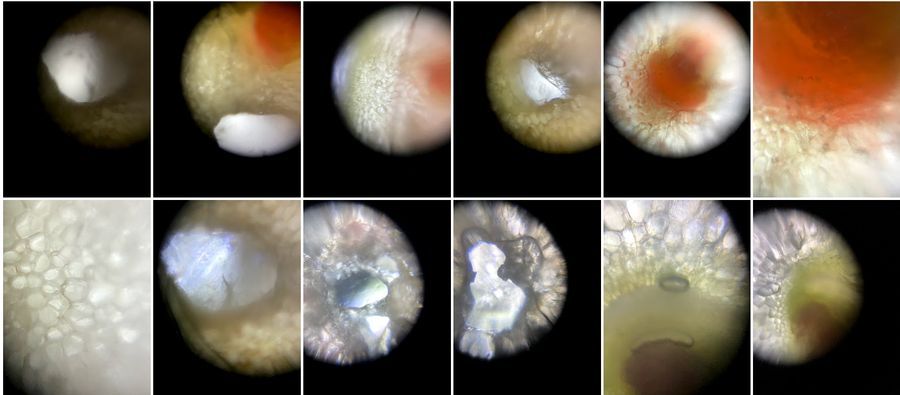
XYLEM: In celery with red food coloring
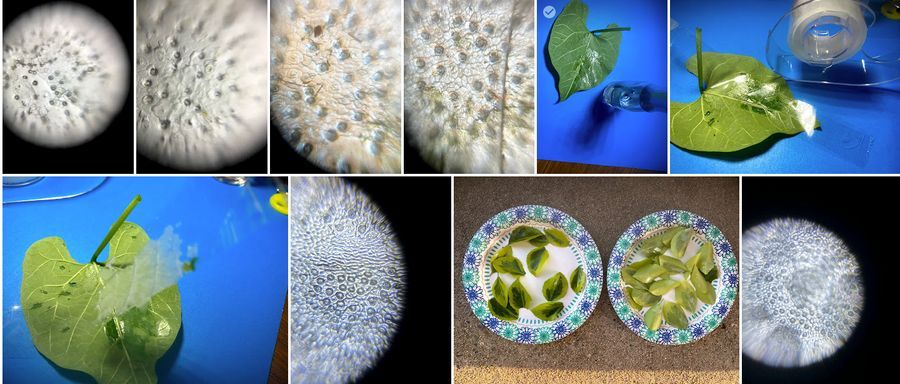
STOMATA: Leaf peel
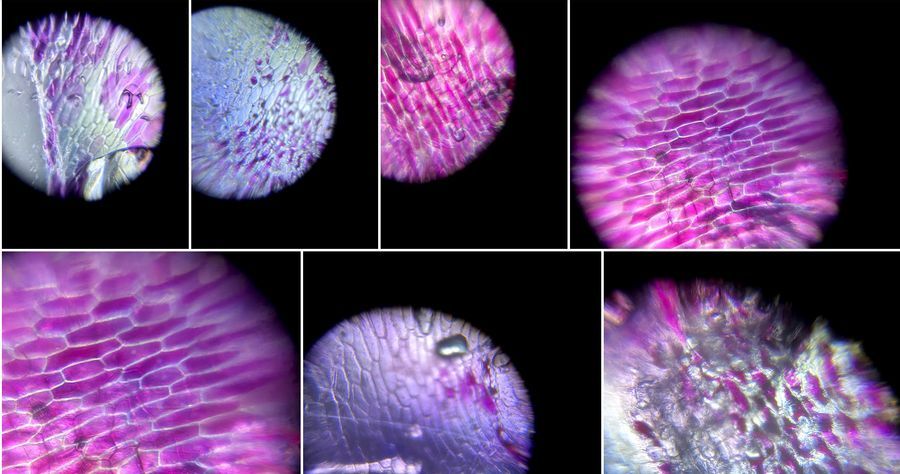
ONION: Osmosis labs
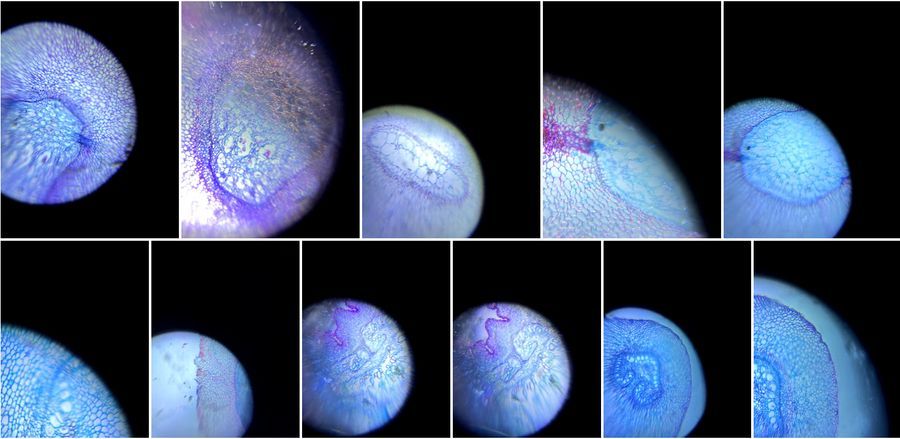
PHLOEM: Prepared slide
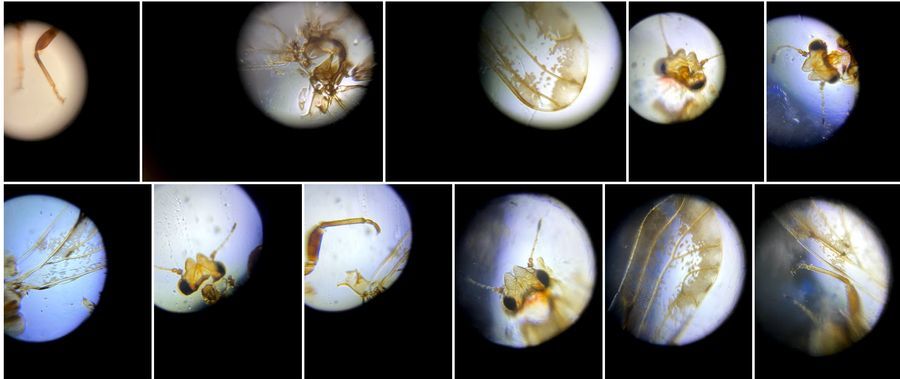
ASIAN CITRUS PSYLLID: Prepared slide
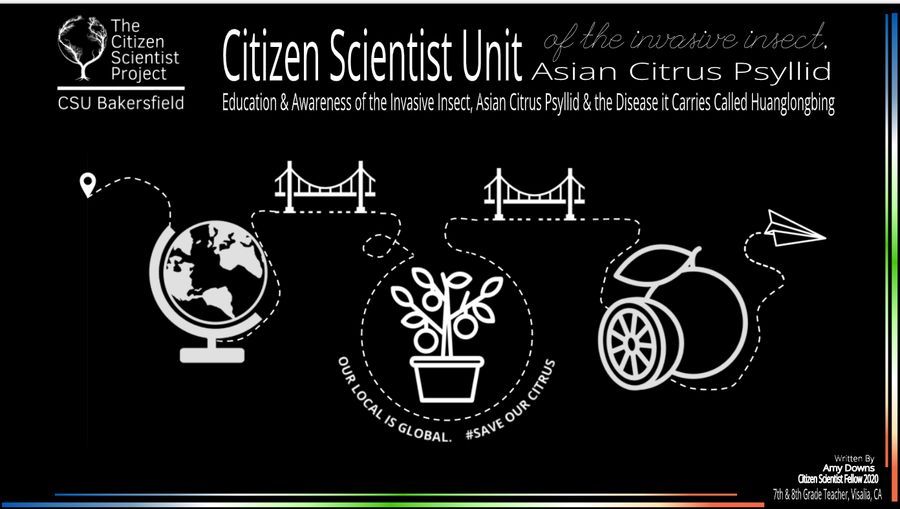
LESSON PLAN SLIDE DECK:
https://bit.ly/CitrusCitSciUnit
https://bit.ly/CitrusCitSciUnit
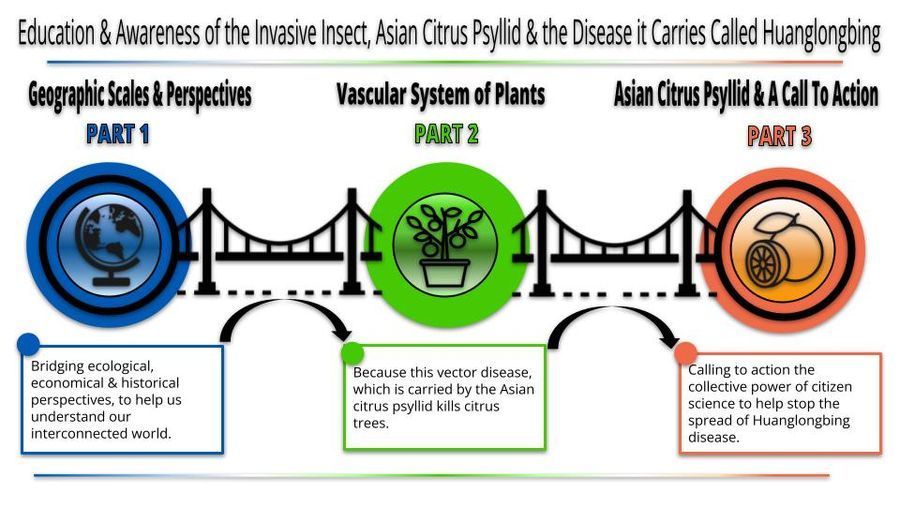
This unit was divided into three parts.
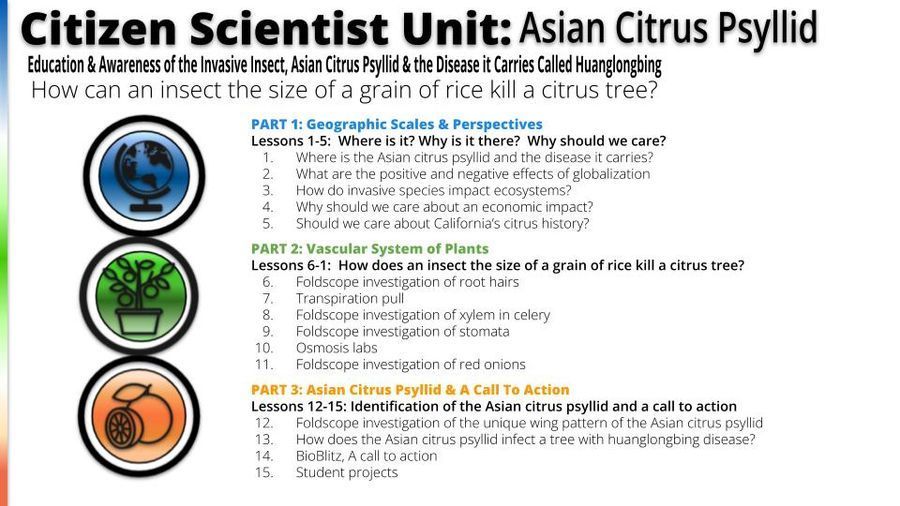
Unit Outline
Project Collaborations & Mentors
Dr. Brittany Beck, Assistant Professor of Teacher Education at CSU Bakersfield, Director of the Citizen Scientist Project Jesus Esquibel, Lecturer at CSU Bakersfield, Assistant Director of the Citizen Scientist Project Dr. Kathleen Szick, Biology Professor at Cal State Bakersfield, Citizen Scientist Project Mentor Dr. Elizabeth Grafton-Caldwell (retired), Research Entomologist and former Director of the Lindcove Research and Extension Center Dr. Monique Rivera, UC Riverside Department of Entomology Dr. Sandipa Gautam, Kearney Agricultural Research and Extension Center, Assistant Research Entomologist Judy Zaninovich, Kern County Grower Liaison for the Citrus Pest Disease Prevention Program One of the most relevant, critical, local, and global issues in our community is the impact of an insect as small as a sesame seed. The Asian citrus psyllid (ACP), an invasive insect. It feeds on the leaves and stems of citrus trees and can carry a bacterium called Huanglongbing disease (HLB). Once a tree is infected it will produce bitter misshapen fruit and die within 5 years. There is no cure. Wherever you find ACP, you find the destruction of HLB in its wake.
My goal was to connect Next Generation Science Standards in a Project-Based Learning unit that would bring education and awareness to this issue for my students and our community.
Project Collaborations & Mentors
Dr. Brittany Beck, Assistant Professor of Teacher Education at CSU Bakersfield, Director of the Citizen Scientist Project Jesus Esquibel, Lecturer at CSU Bakersfield, Assistant Director of the Citizen Scientist Project Dr. Kathleen Szick, Biology Professor at Cal State Bakersfield, Citizen Scientist Project Mentor Dr. Elizabeth Grafton-Caldwell (retired), Research Entomologist and former Director of the Lindcove Research and Extension Center Dr. Monique Rivera, UC Riverside Department of Entomology Dr. Sandipa Gautam, Kearney Agricultural Research and Extension Center, Assistant Research Entomologist Judy Zaninovich, Kern County Grower Liaison for the Citrus Pest Disease Prevention Program One of the most relevant, critical, local, and global issues in our community is the impact of an insect as small as a sesame seed. The Asian citrus psyllid (ACP), an invasive insect. It feeds on the leaves and stems of citrus trees and can carry a bacterium called Huanglongbing disease (HLB). Once a tree is infected it will produce bitter misshapen fruit and die within 5 years. There is no cure. Wherever you find ACP, you find the destruction of HLB in its wake.
My goal was to connect Next Generation Science Standards in a Project-Based Learning unit that would bring education and awareness to this issue for my students and our community.
Sign in to commentNobody has commented yet... Share your thoughts with the author and start the discussion!
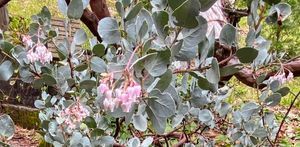
 0 Applause
0 Applause 0 Comments
0 Comments


